EBR charges a service fee to manufacturers to produce ebike reviews and videos, this began in 2018. It’s the same flat fee for each bike, and it helps us to keep the site going while limiting ad clutter. We appreciate the opportunity to serve you with our opinions and data but respect your right to know that we receive compensation :)
Electric Bike Outfitters (EBO) is a Denver, Colorado based company that has been in business since 2015, and is now expanding to other states and even shipping ebike kits worldwide! The founder, Jason Livingston, has always struck me as a relaxed and honest guy. I have known him since 2015 when we reviewed some of his first products. EBO kits have limitations, sure, but the 30-day return policy and one-year warranty is reassuring for a product like this, that tends to be priced lower and is prone to more complications than complete electric bikes. He does such a good job in fact, that many electric bike stores will carry his kits and perform conversions for customers so they don’t have to get their hands dirty. I have consistently been impressed by the lengths to which Jason will go to customize each sale… for the Burly kit, he offers hub casing and wheel color options (black or silver) as well as two display types, a trigger, half-grip, or full-grip twist throttle, and hand spoked 16″, 20″, 24″, 26″, 27.5″, 28″ (or 700c), 29″ or even fat bike rim! That means you could convert everything from recumbents, to kids bikes, to grownup city bikes, tandems, trikes, and even mountain bikes, as long as you can figure out a way to mount the battery pack. Electric Bike Outfitters will even create cables that are longer than normal, so you can mount the display, battery, and throttle in the best possible locations vs. compromising. You can see the EBO headquarters location and workshop towards the end of the video review above, and it’s clear that Jason is organized and detail oriented. Compared to most purpose-built electric bikes, the 36 Volt Burly conversion kit is affordable and flexible, but not quite as beautiful looking because of the extra cables and bigger battery box. Settings wise, you can lower the top speed to feel safer, make the throttle active in assist level zero so you can ride like a scooter, and enable cruise control so your wrist won’t get tired! So many options, but the default is configuration is a 20 mph top speed with throttle override (at full power) in assist levels 1-5 but not zero. I was told that cruise control is disabled and the bike starts in assist level zero for safety reasons, and that makes sense. You can dig in comfortably, and experiment with options by using the online manual that Jason has edited and clarified from its original. In short, this kit will transform almost any human powered bicycle into a Class 1 or Class 2 electric bike (depending on whether you use the throttle or not). It’s the lightest and most affordable in his line, but I found that it was still satisfying and capable on flat pavement and packed dirt for my 135 lb body weight. As a more active rider, I prefer the nimble feel of geared hub motors and appreciate the lower battery mount position found here.
The motor that comes with this kit is a planetary geared design that Jason modified to work with a wide variety of forks and rear dropouts. The Aluminum alloy shell is tapered inward to avoid scraping the frame, a problem I have encountered with some older kits such as the Hill Topper. The EBO motor is built onto a 12 mm threaded axle with 9.8 mm flat cuts on each side, which fit into dropouts and push agains the frame as the motor turns. By default, the kit does not come with an external torque arm to spread the force of the motor, because it is not as powerful as all of the other EBO motors, but you can pay a bit extra if you do want a torque arm because of softer or failing dropouts on your individual bike. The left side of the casing has threaded eyelets for mounting a disc brake rotor, but the rim also has machined sidewalls so the kit is compatible with disc brakes or linear pull caliper or v-brakes. The motor is spoked into each rim by hand, with thicker 12 gauge spokes that increase strength. Jason opened one of the motors up so we could look at the copper winding and planetary gearing inside. The gears were plastic, which is not uncommon for motors like this, I have found that it is still very durable but also quiet and lightweight vs. steel or aluminum gearing. This motor freewheels efficiently when you coast, only weighs ~5.75 lbs total, and rams up smoothly vs. feeling jerky. The hub spacing sizes you can oder are 100 mm (for front wheel fork mounting) or 120 mm or 135 mm hub spacing (for rear wheel mounting). If you opt for a rear wheel configuration, you’ll usually get better traction from the tire because body weight tends to be distributed towards the back of bicycles, as well as stronger mounting points… but it can be more difficult to install a rear wheel, and more crowded. This is because many bikes have rear derailleurs which have cabling fed to them for shifting. There is also at least one sprocket, and the EBO Burly kit can be configured with a single speed, 6, 7, or 9 speed cassette to replace your existing hardware. If you currently have a quick release wheel setup, the Burly will replace it with the solid threaded axle and nuts. You’ll have one additional cable to worry about (protruding from the right axle), and this is something to be very careful with. Try not to let the bike tip over and bend this cable or let it snag on foliage or rocks as you ride. It’s a vulnerable point for most hub motor powered ebikes! One happy benefit of this drive system however, is that it completely separates pedaling from the motor, and reduces wear on the chain, sprockets, and derailleur, compared to a mid-drive.
Powering this kit is a Lithium-ion battery pack, made with Samsung 18650 cells. They’re configured as 10 in series and 5 in parallel to offer 36 volts and 11.6 amp hours (though Jason advertises 11 to set expectations more realistically). Hub motor powered ebikes tend to feel zippy and fun, but aren’t as efficient as most mid-drives. They work easily with throttles, don’t require a custom frame design to interface, and aren’t as vulnerable (lowering your mid-frame ground clearance). So, the battery pack itself is reasonably lightweight at ~6.62 lbs, and it interfaces with a plastic slide which you need to screw onto your frame somewhere. There is a sturdy metal track inside the plastic slide, with long slots for inserting bolts. Ideally, you’ll be able to mount this to bottle cage bosses on your downtube. This is what was done for the demo mountain bike you see in the video and images above. It positions the battery weight low and center while protecting it from getting kicked as you mount. Lithium-ion cells are known for being relatively lightweight but very durable and long lasting. They don’t develop a memory if you forget to charge them right away, but they are still heat and cold sensitive. Jason recommended recharging after the pack had been depleted to around 20% vs. recharging after every short ride. He explained that this would allow for more full cycles, and help the cell chemistry last longer. However, if you go below 20%, there’s a chemical change in the batteries and this can be hard on them. It’s best to store the pack in cool, dry location, and you can charge it either on the frame or off. It locks securely to the frame but has a hinged handle on top for safe lifting. I do have a few gripes about the battery pack, and the first one is that the slide mount only attaches with two bolts in most cases. Compared to purpose-built e-bikes, it’s just not as sturdy or nice looking (newer bikes have batteries that are sunk into the downtube a bit for even lower weight and sturdier positioning). It may not fit at all on some youth, folding, or step-thru frames (and for that, EBO has the Cruiser kit with rear-rack battery mount). The battery has three ports in the right side (a fuse, charging point, and USB port), and I found the charge port cover a bit tricky to seat properly… I had to be intentional about lining it up before pushing hard. The USB port on the battery is disabled because Jason said it can slowly discharge the battery (potentially taking you below the 20% point). The battery charger itself is pretty basic, providing 2 Amps of power output for regular charging speeds, but it’s compact and lightweight at just ~1.1 lbs. My final complaint about the battery pack is that you have to turn it on independently from the display, and this takes an extra few seconds. The time isn’t such a big deal, but you also have to remember to turn it off after each ride (or it will slowly drain the pack), and if you mount the bike before turning the battery on, you might have to bend way down or twist in an uncomfortable way. It’s a minor gripe, one that isn’t unique to EBO kits or even purpose-built electric bicycles, but one worth noting.
And so, let’s imagine that you have charged the battery, mounted and locked it to the frame, turned it on by pressing the silver circular button on the left side (which has a blue LED glow once activated). Now, you can finally press the power button on the control pad! Actually, you hold it for a couple of seconds, and then the LCD screen (or LED console) comes to life. The default hardware is a nicer backlit LCD with integrated USB charging port, but EBO does offer to swap it for a basic LED console to reduce handlebar clutter and limit the fancy look (which could attract unwanted attention in some situations). As much as I love the LCD, and will be focusing on it from here on out, the LED pad is a step above average because it shows a speedometer in addition to charge level and assist mode. Neither one of these display panels is removable, but both can be swiveled a bit to improve readability or reduce glare. The LCD shows all sorts of menus but only uses three buttons to operate. And they are located within reach of the left grip, on the remote button pad. This control system combines simplicity with depth, and is intuitive to use, without looking down all the time, once you get the hang of it. The power button in the center of the pad allows you to cycle through trip stats like odometer, trip distance, average speed, max speed etc. and the up and down arrows allow you to raise or lower the assist setting. By default, the bike is set to assist level zero so that the throttle is inactive. Once you arrow up to 1-5, the pedal assist sensor goes live and you can instantly use the throttle with full power. Again, it ramps up smoothly and feels a bit more refined than some other systems I have tried. I prefer to pedal with an efficient, lower level of pedal assist, with occasional bursts of power to catch up with friends or climb hills, and this system lets me. Whether you’re riding in bright light or darkness, the LCD should be viewable, because you can hold the up arrow to activate backlighting. Holding down will activate walk mode if the bike is not moving more than 6 mph already. If you enable cruise control in the settings (by holding up and down simultaneously) you can then hold the down arrow if you’re using the throttle at any set speed above 6 mph to activate cruise control and give your wrist or thumb a break. It’s a feature I don’t see a lot, and one that some people might really appreciate for long commutes. There are so many settings to explore here, including lower top speeds… or more or less sensitivity in the cadence sensor. Jason convinced me that eight magnets was enough for their cadence disc (verses 12 magnets that I have seen on some other ebikes). He explained that the disc itself is smaller and less likely to be bumped, but also still very responsive. Apparently, some people want to set their cadence sensors to be less sensitive, so that the bike won’t surprise them if an accidental partial pedal stroke is made, and you can indeed make the cadence sensor less responsive with the settings menu here. I’m convinced that the cadence sensor is one of the more difficult parts to install with this kit, because it requires a bottom bracket wrench or help from a shop to get on. You have to take the crank off first and actually slip it over the spindle, it’s not a easy clip-on design, but the benefit is that it should be more sturdy and reliable in the long run. In short, I love that the display that comes with this kit is so useful and that this bike can be customized to perform as you prefer. It’s not limited or locked up like most purpose built ebikes… it even gives you USB power for maintaining a phone, music player, or lights on the go. When conducting this review, Jason had explained that the display had a 20 second lag for the current speed to register (based on their new firmware that works with 36 and 48 volt motors. I was thankful that Jason was aware of the issue and honest about it as we talked on camera, he has since resolved this issue (late February 2018) but I wanted to keep this note for those who might have an older version.
A the end of the day, this kit is using proven hardware (a geared hub motor and cadence sensor) that isn’t as fancy as some of the newest ebike technology, but gives you lots and lots of options for how to operate it. Even though cadence sensors are known for producing more of an on/off feel, the motor has been designed to ramp up smoothly, so it isn’t as jerky or startling. The control systems are intuitive, but deeper than normal, and not locked. You can coast efficiently with this kit because there is no cogging or reduction gearing at the bottom bracket, it’s easy to pedal around even when the motor is turned off because it only adds ~14 lbs to the bike. I meet a lot of people who want larger batteries and it appears that you can actually daisy-chain packs and accomplish that here! I saw a really cool setup on a recumbent trike with two batteries being built with the 48 volt Burly kit while visiting the shop. For me, the 350 to 612 watt output of this kit was very satisfying, but I only weigh ~135 lbs and enjoy pedaling. There’s always a trade-off between cost, weight, and performance with bicycles, and this was one of my favorite kits on offer for a single-person electric bike experience. For people who want more power, check out the 48 volt Burly or 500 watt motor Mountaineer. Big thanks to Jason and his team for hosting me and partnering with me on this review. It was nice to catch up with him and see how the product has been refined since 2015. He is expanding in a way that seems sustainable, definitely growing, and I love that his support is still above average for the industry (at least the kit industry). It’s part of the slightly higher pricing, and also what makes dealer sales possible. I was impressed to hear that several Denver ebike shops actually carry his kits and offer them as an alternative over purpose built products. There’s something to be said for recycling an existing bike, breathing new life into an old favorite, or building a truly custom setup that isn’t available anywhere else.
Pros:
- EBO has been in business since 2015, they offer a generous 30-day return policy with a one year warranty, and they ship worldwide… I trust them a lot more than some of the generic kits found on Ebay
- The Burly kits offer a lot of choice in terms of color, both the hub casing and rim can be ordered in silver or black to match your bike
- Whether you’ve got a recumbent, kids bike, folding bike, city bike, or mountain bike, it seems like Electric Bike Outfitters can build a wheel to fit your bike because they spoke in-house and build to order
- EBO uses nicer parts on their rims and thicker spokes to handle the additional forces of a hub motor, their new Julet connectors are water tight and color-coded for easier assembly and repair
- Safety is a big focus for me, so I appreciate the more sensitive cadence sensor, adjustable top speed settings, different throttle options (trigger, half-twist, and full-twist) as well as the brake lever motor inhibitors
- If your bike uses hydraulic brakes, EBO does have an optional sensor and magnet unit that can be screwed and glued on to enable motor inhibiting, but it’s not as elegant or simple as the stock mechanical brake levers
- The display panel is large, easy to read, full of interesting settings to experiment with (and EBO has a nice manual to help you do so on their website), and it has an integrated USB charging port, though the display cannot be easily removed for protection at bike racks or wet days
- The hub motor itself is fairly quiet, even when being used at the higher assist levels and higher top speeds, this is due in part to the lower 36 volt operation of this kit
- Even if EBO eventually goes out of business or changes some of their kit hardware, you should still be able to get parts and have your battery case re-packed because they are not software locked and follow an open industry-standard vs. being proprietary
- Given that the battery pack weighs ~6.62 lbs, it’s great that there’s a handle built into the top, so you can carry it more securely, I suggest storing it in a cool dry location and avoiding extreme heat and cold
- The battery charger is a bit basic, only offering a standard 2 Amp power output, but it’s very lightweight at ~1.1 lbs, it’s also compact and should fit into your backpack or other bags easily for charging on the go
- On the one hand, installing the hard-mounted cadence sensor takes more time and tools than one that is glued or zip-tied on, but on the other hand, it is going to be more secure this way, and I found that it worked very well during the ride tests
- The hub motor can be setup in a front or rear wheel configuration, and EBO offers single speed, 6 to 9 speed, and Shimano and Sun Race cassette options
- Apparently this kit is named the Burly because the battery is tough and the whole system tends to be reliable, it’s one of the more popular options that EBO sells because it positions weight low and centered for improved handling and steering
- Being able to transform an existing bike into electric with multiple drive modes like this for just over $1.1k seems pretty good to me, there are cheaper kits out there, but most of them don’t offer this level of performance or support
- For those who want a really compact display, or just less flashy hardware on their bike, EBO offers a black LED control pad with integrated buttons… and I like this thing because it also has a basic speedometer! most other LED control pads only show your battery charge level and assist
- You can activate walk mode to help move the bike by holding the down arrow if it is standing still, if you enter into the menu settings you can activate cruise control and then when riding over 6 mph, hold the down arrow for a few seconds to set cruise speed, in the settings you can also enable throttle mode at assist level zero if you want… or even remove the throttle and only use pedal assist, there are just so many options
- Before shipping each battery, the team at Electric Bike Outfitters actually drains and refills it to test all of the cells, I was told that they experience a 1% failure rate and by testing like this, it saves you time and hassle as the end consumer
- The actual motor casing has been custom designed by Jason, the founder of EBO, and he made it fit on a wider number of narrow forks, it works with linear pull brakes or disc brakes (you can mount dis brake rotors directly to the side of the hub casing)
- Hub motor ebikes can often have more pedal gears to work with than mid-motors (because they can easily support multiple front chainrings), and shifting gears causes less wear because the motor power is separate from the pedaling drivetrain
Cons:
- Unlike a purpose-built electric bike, kits usually have extra wires that aren’t as hidden or neat looking, the battery mount slide connects to the downtube with two bolts vs. three or some even sturdier custom design
- The 8-magnet cadence sensor worked pretty well, and can be adjusted for sensitivity in the settings area of the display, but it simply isn’t as fluid or dynamic as a torque sensor or multi-sensor, there’s a bit of lag starting and stopping
- The little rubber cap that protects the charging port on the right side of the battery can sometimes be difficult to seat, it’s a minor annoyance but something worth fiddling with each time to protect from dust and water
- Installing a kit like this will take a bit of time, energy, and possibly additional tools like a crankset puller and bottom bracket wrench, you might even want to get your local ebike shop to help you
- For some of the older versions of this kit, the display panel might have a 20-second lag before showing your current ride speed, I was told that this has since been resolved with a software update, apparently the speed sensor is integrated into the motor hardware, the delayed readout was a minor annoyance and could cause confusion at times
- This isn’t a big complaint, but the USB charging port on the battery pack has been disabled (to reduce phantom power draw over long periods of disuse), there’s a second USB port on the lower right side of the display panel, but sometimes it’s nice to use the battery itself as a backup power source off the bike
- Most hub motors have the power cable entering into the axle from one side, and this can be a point of vulnerability if the bike tips or you ride close to obstacles that could snag or scrape it, a few of the new Dapu motors have their power cables tucked very closely (behind the disc brake rotor) but I don’t think that you can order them as kits
- Turning this bike on and off requires two steps, which adds a bit of time, you first have to click the battery pack itself on and then press the power button on the control pad, just remember to turn it all off before dismounting, transporting, and storing to prevent accidental activation
Resources:
- Official Site: http://www.electricbikeoutfitters.com/ebo-burly.aspx
- More Pictures: https://photos.app.goo.gl/hpYMrgNNdV2JRimi1

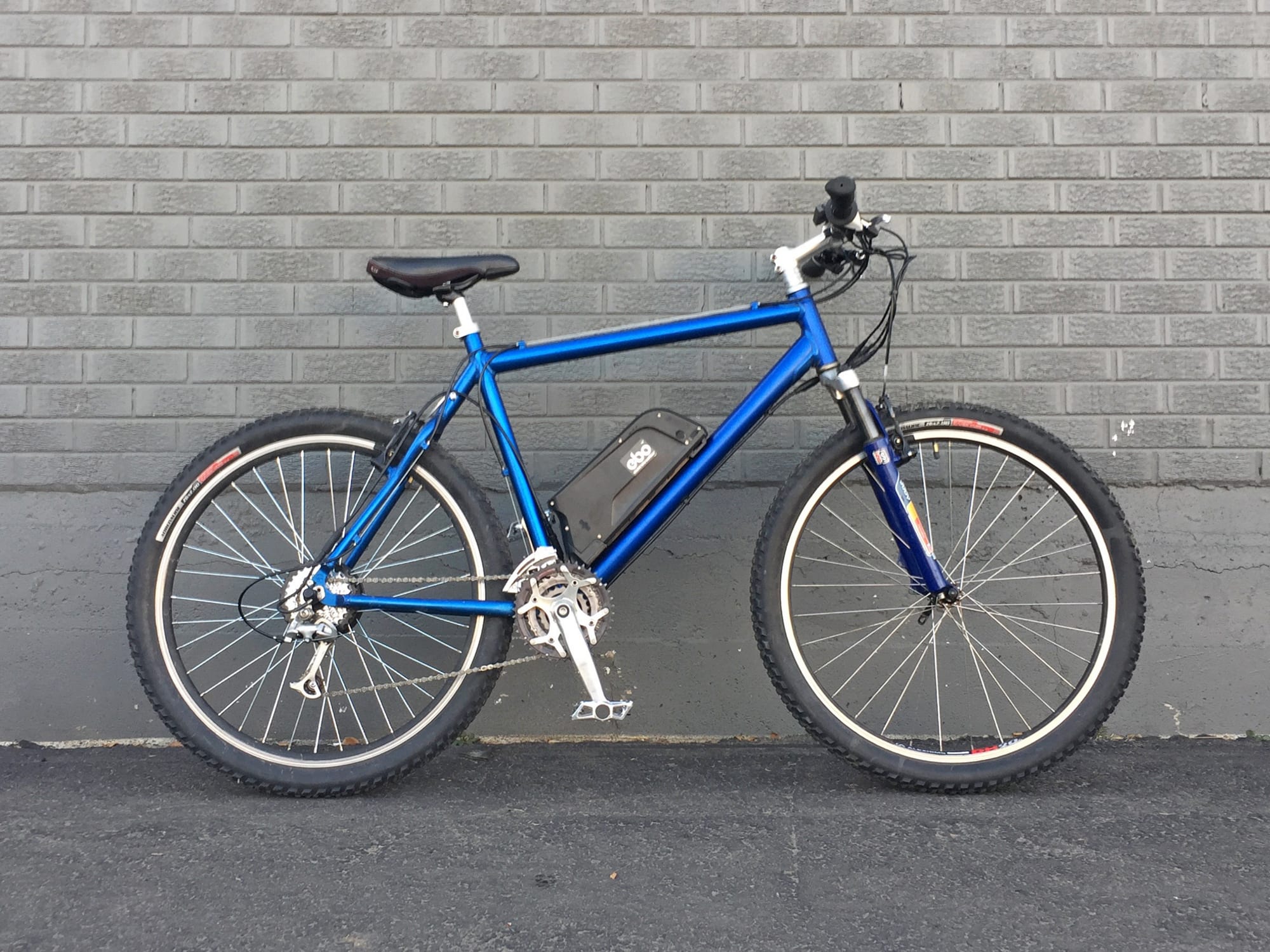
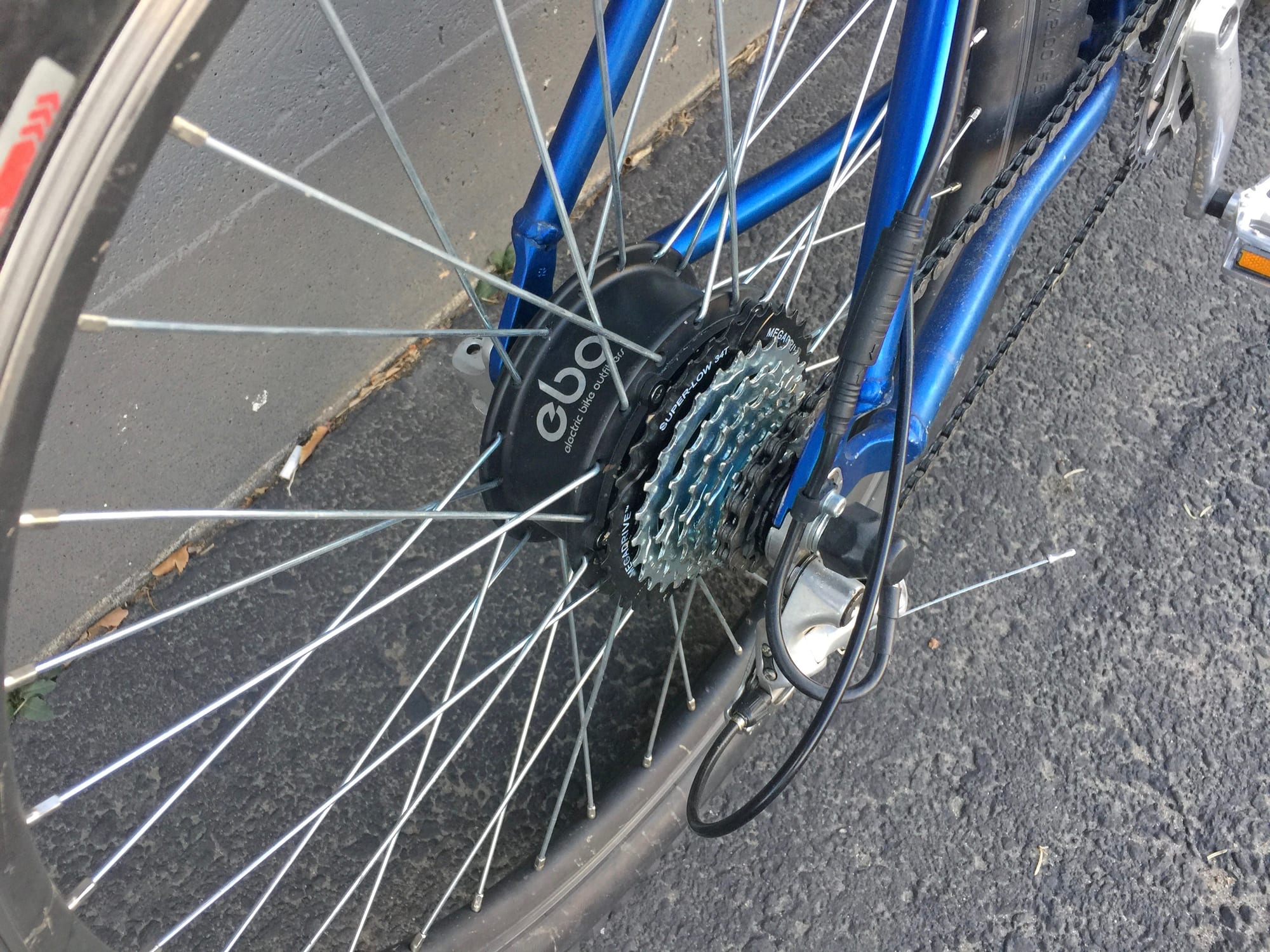
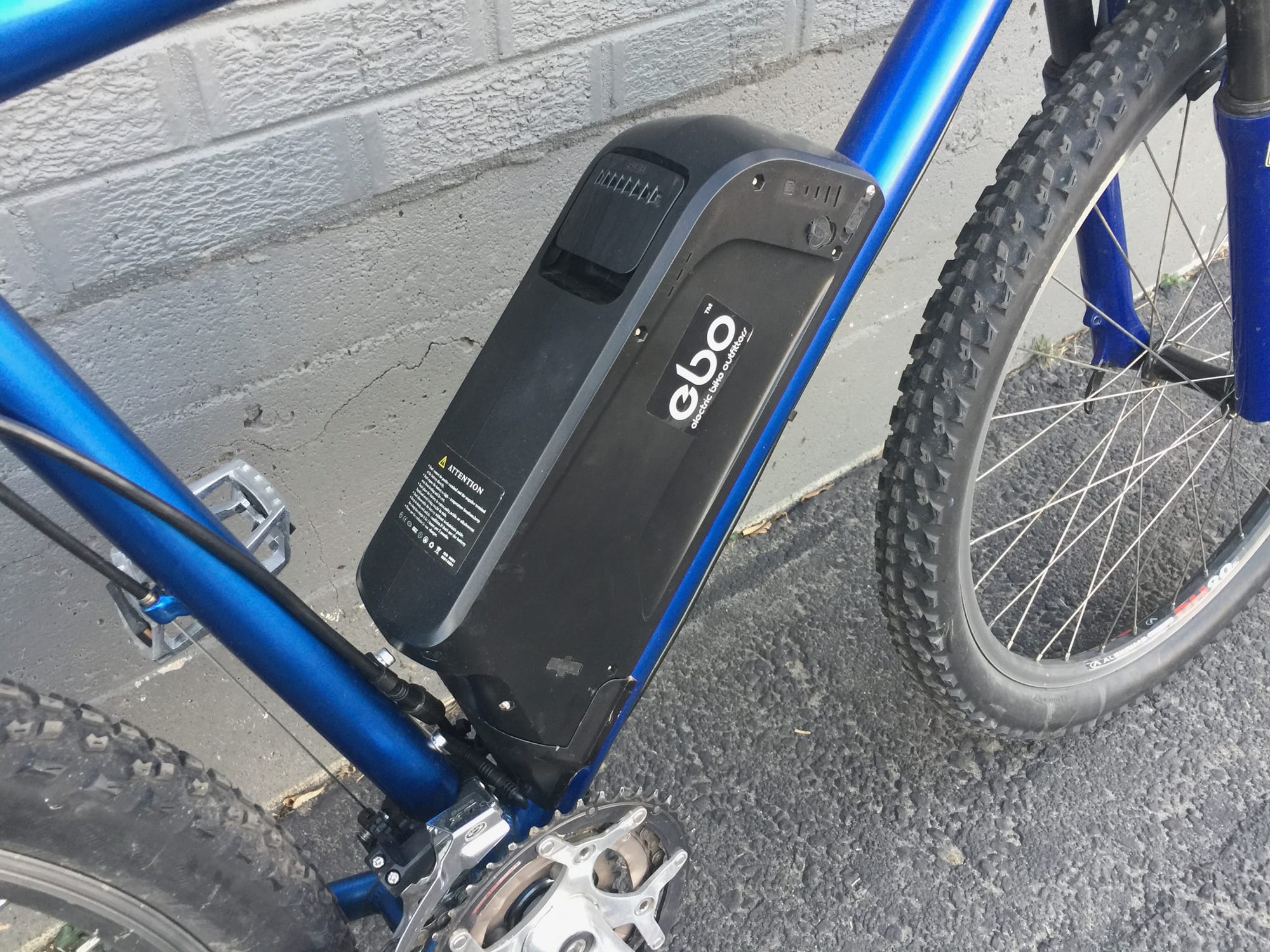
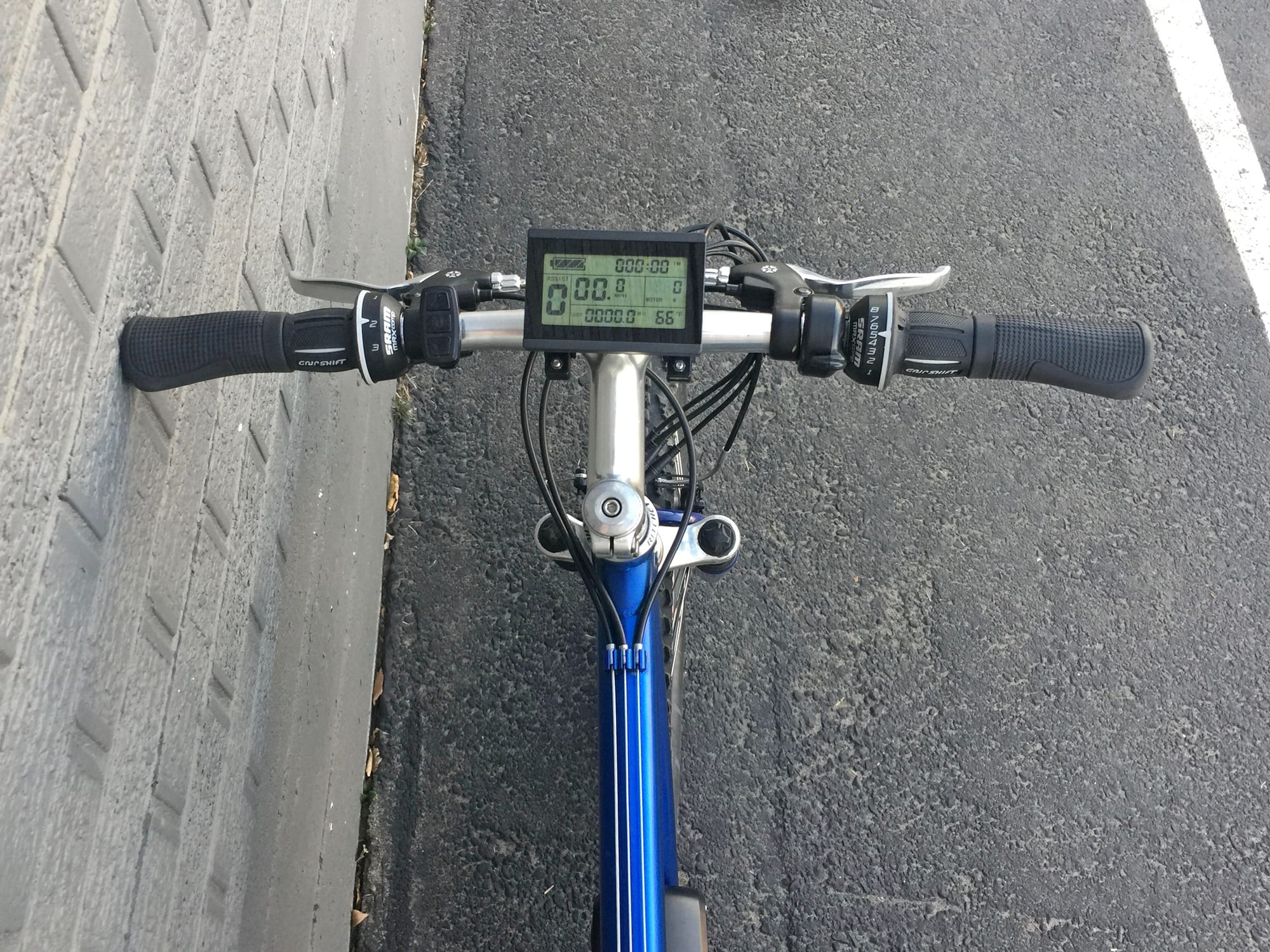
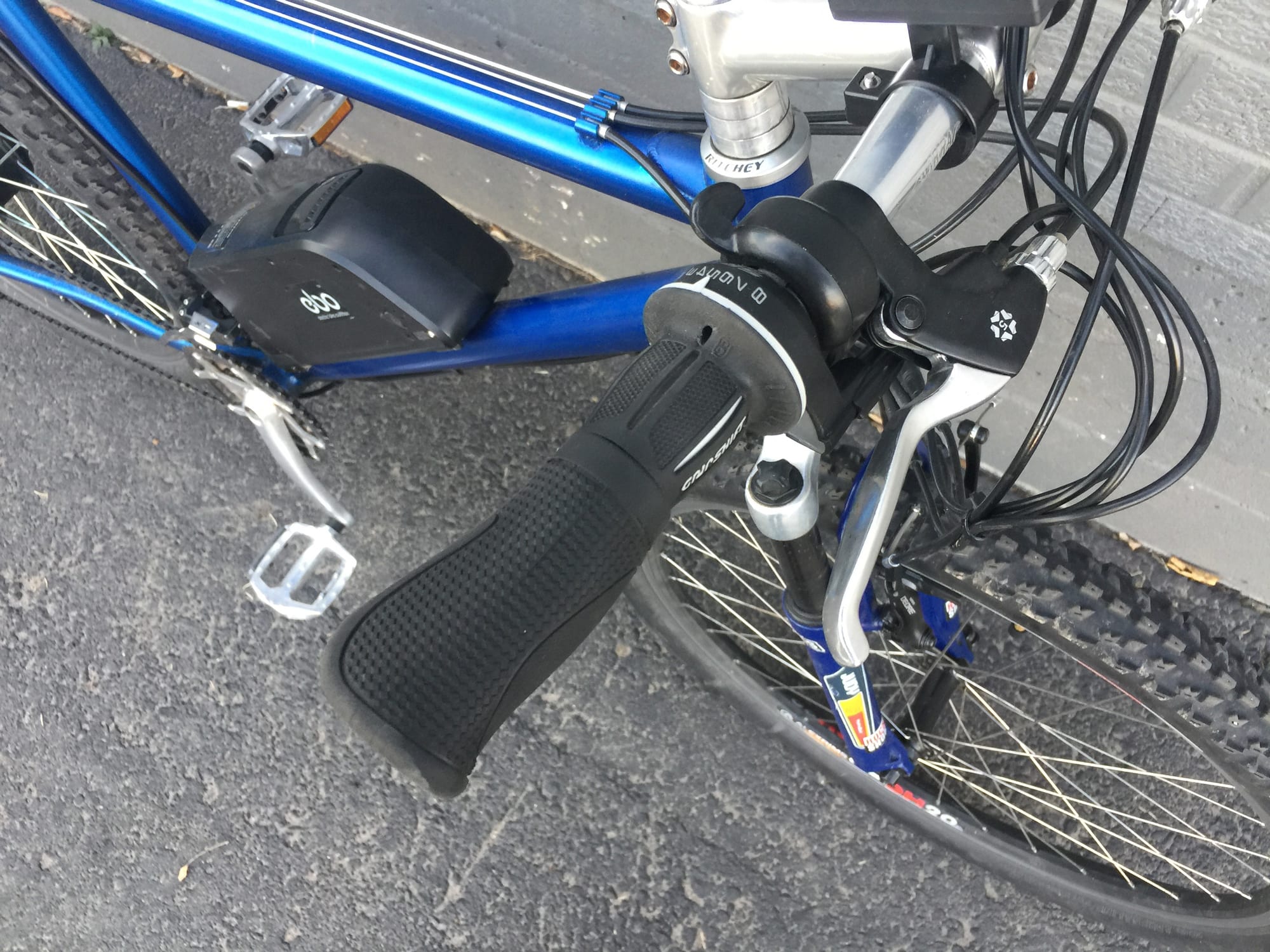
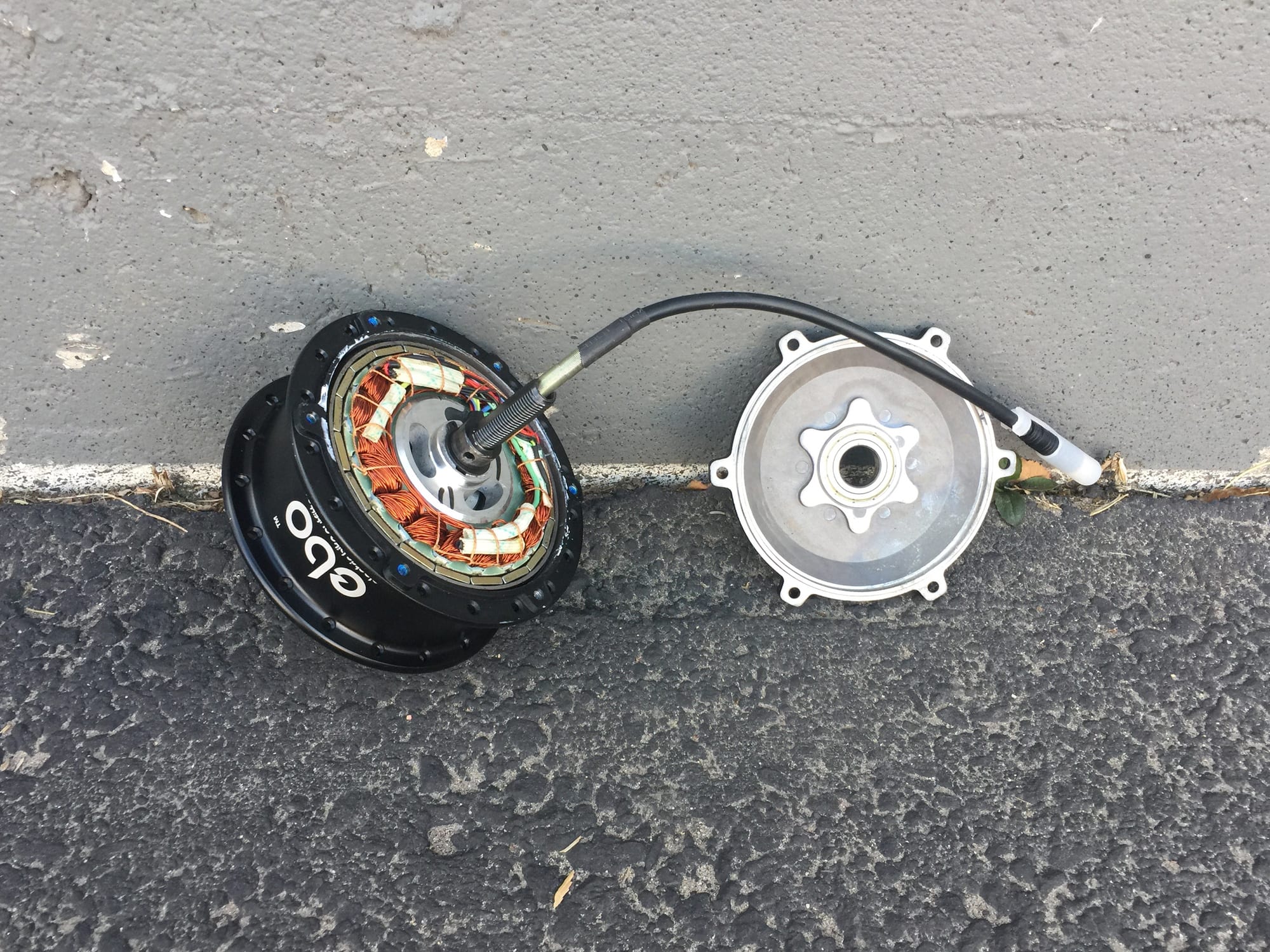
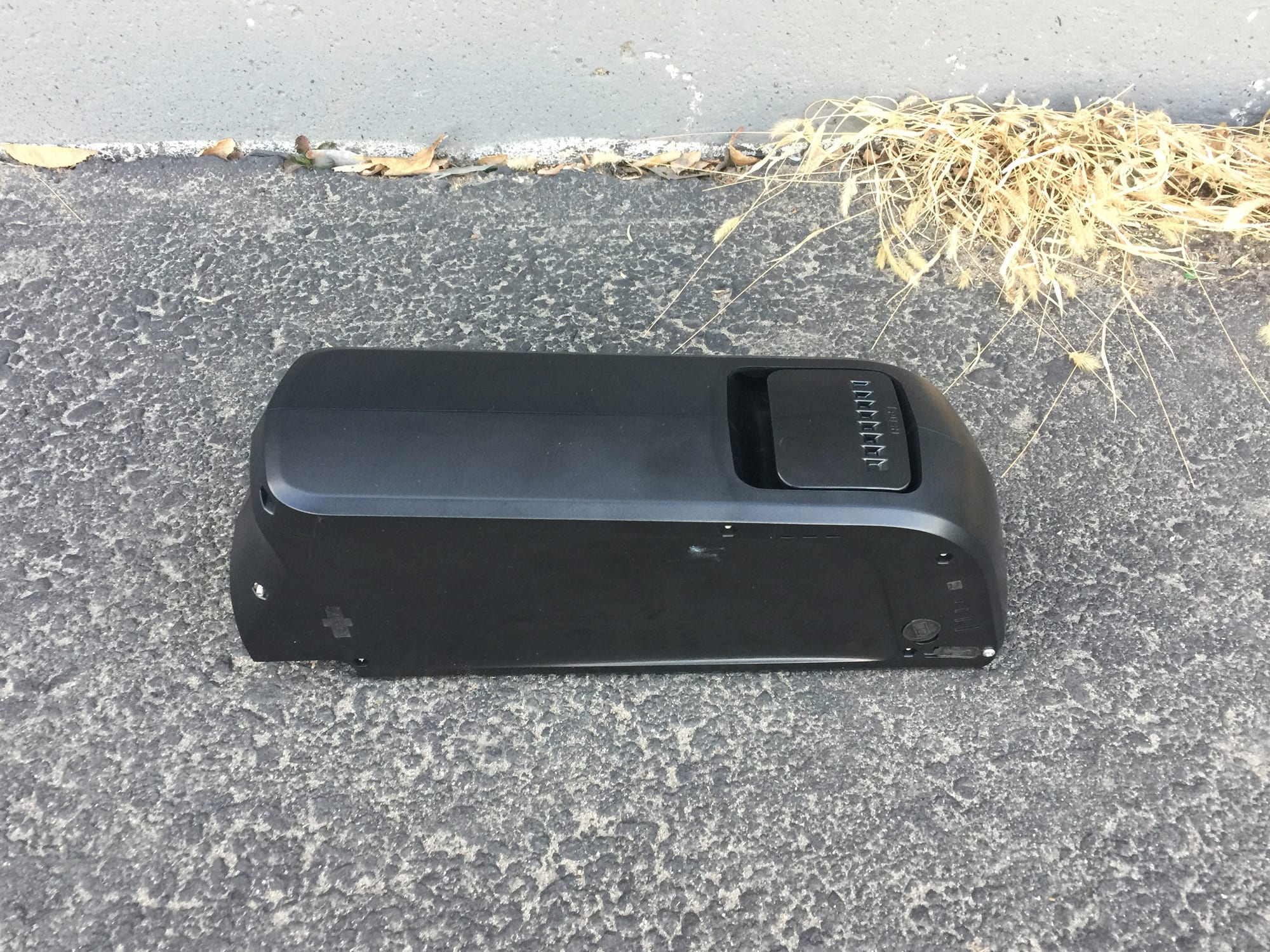
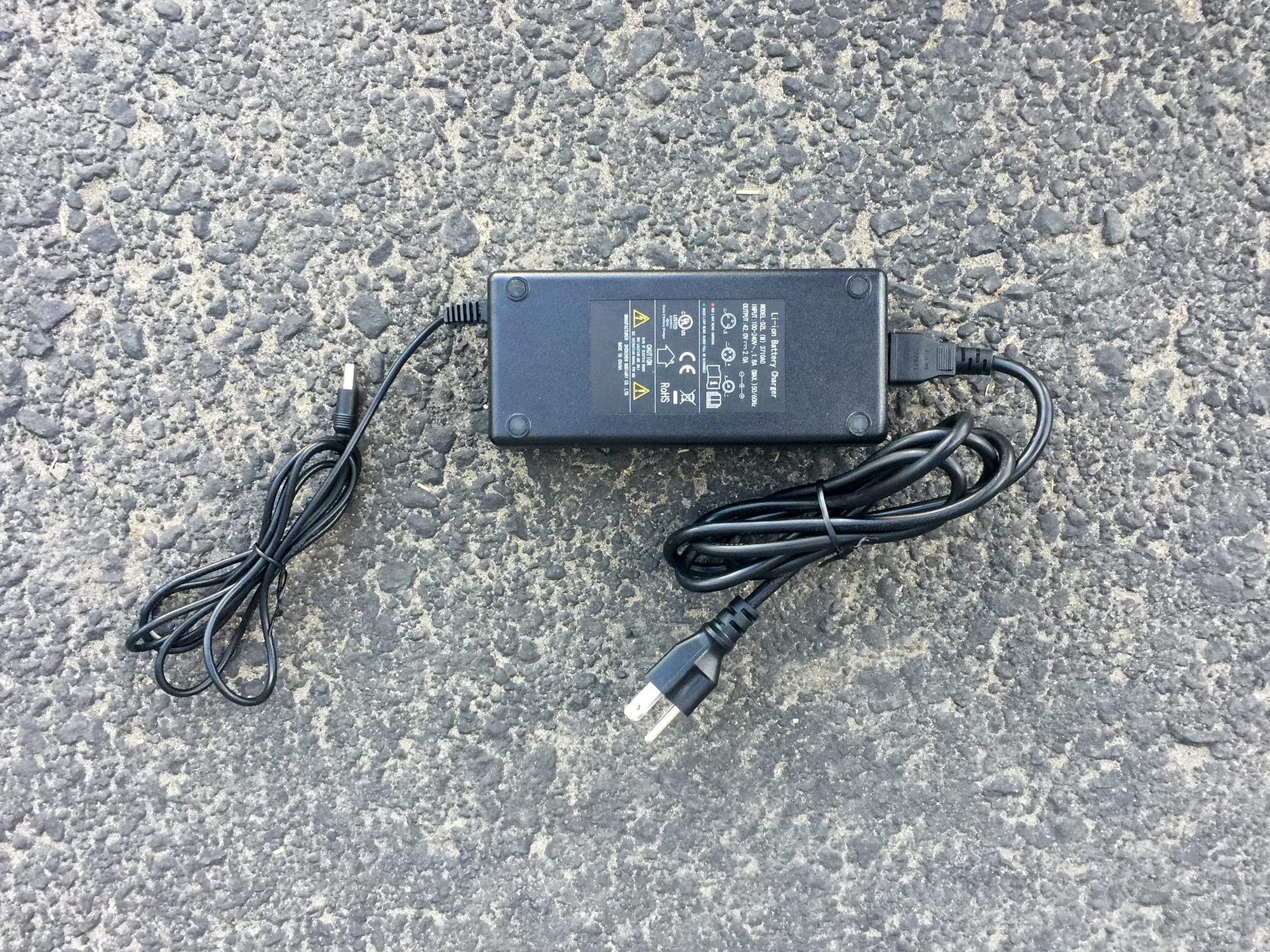
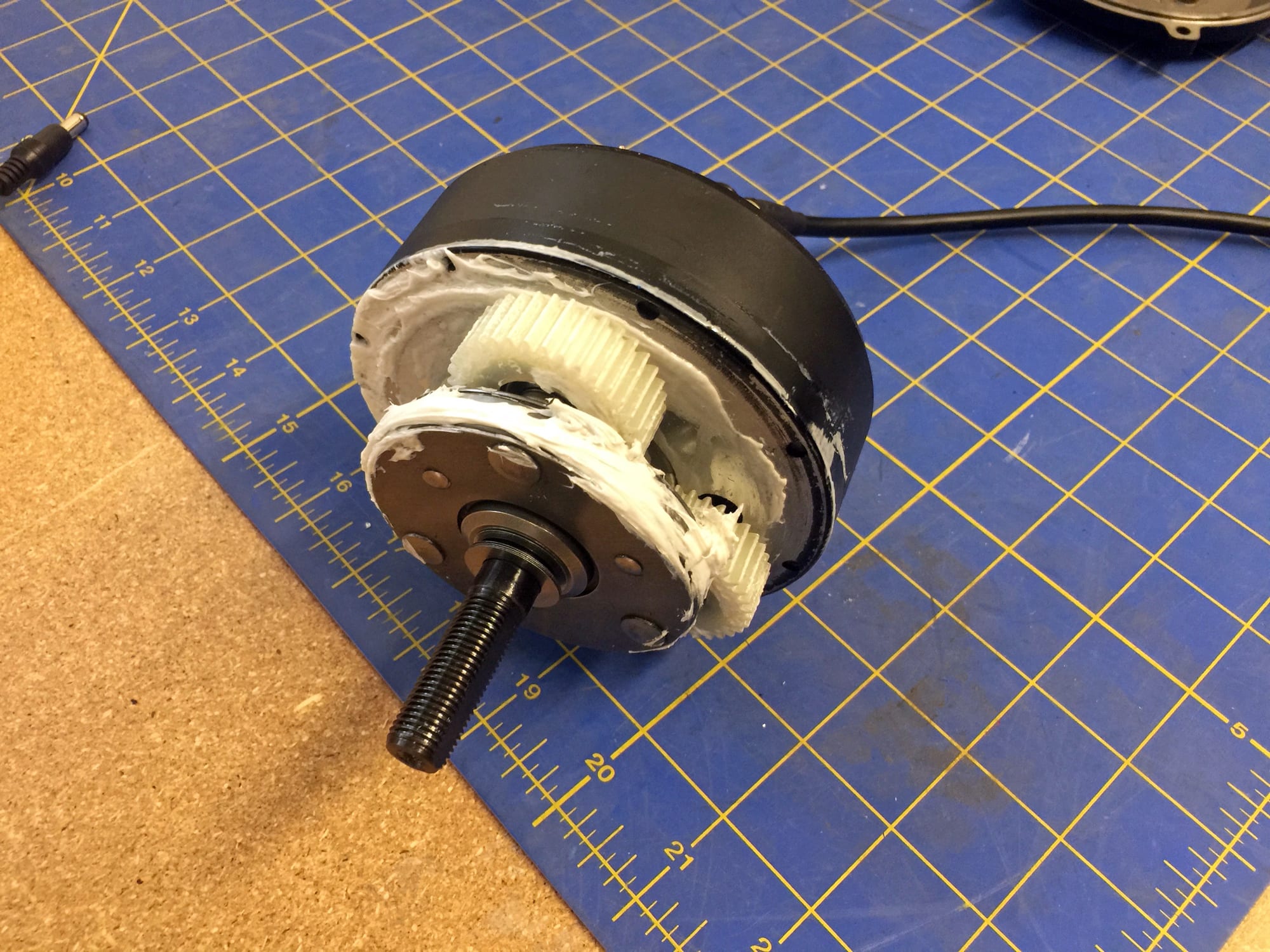

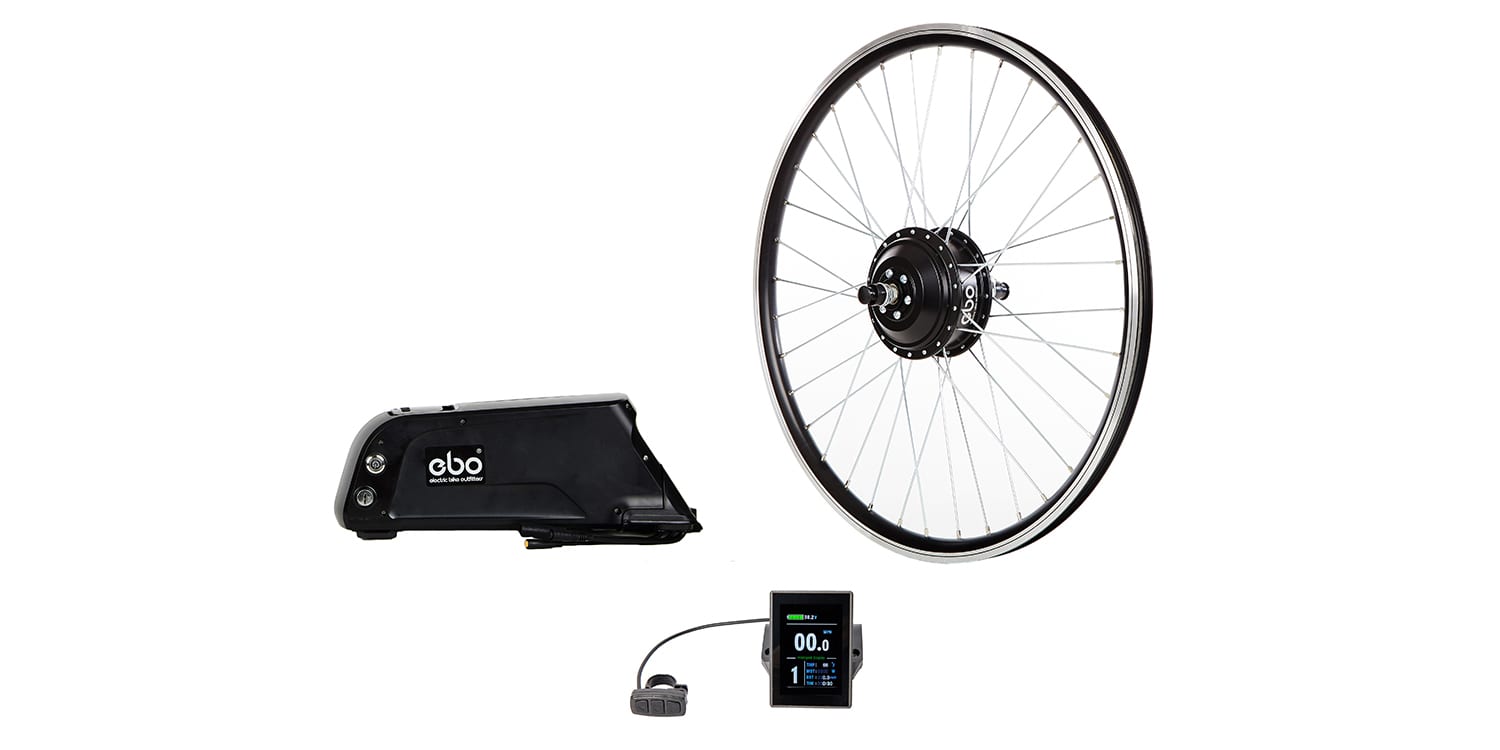
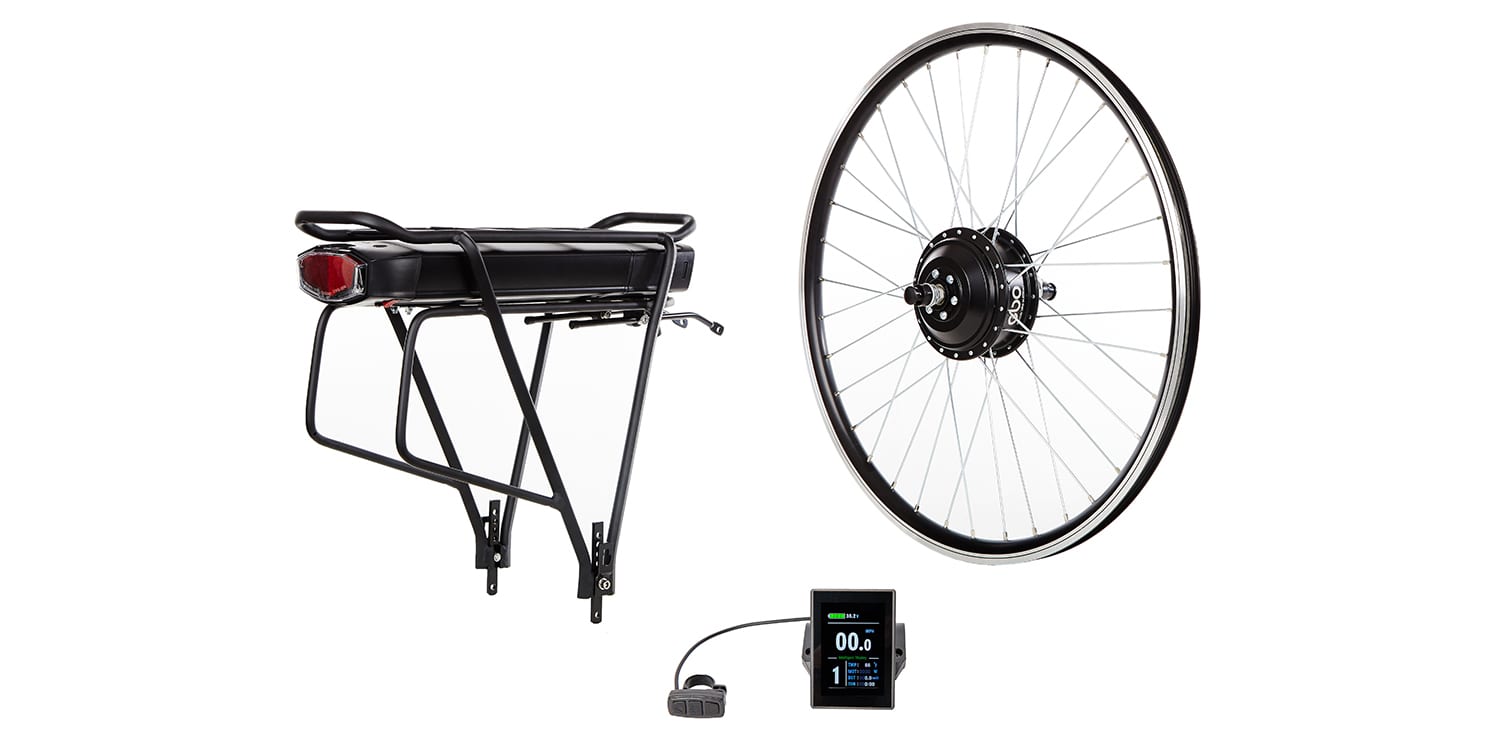

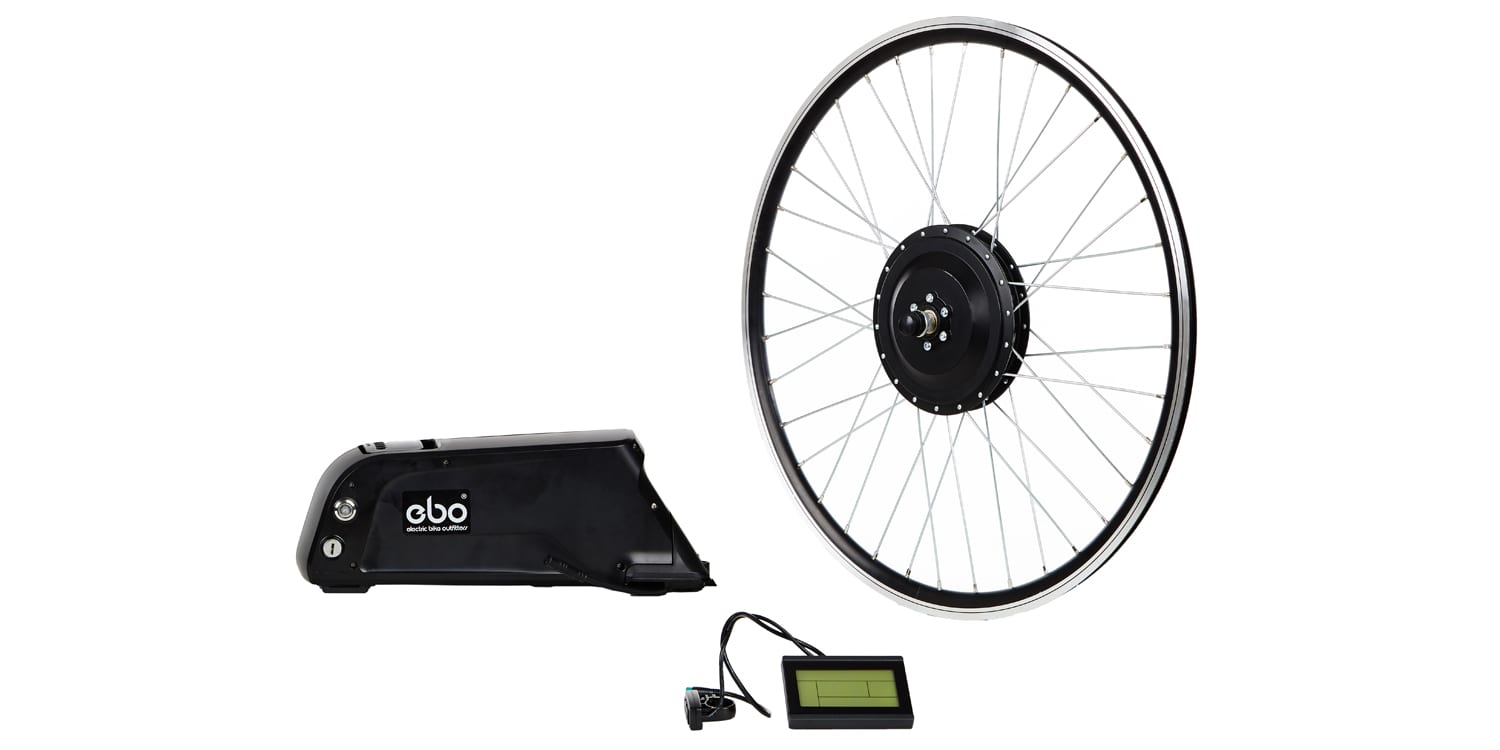
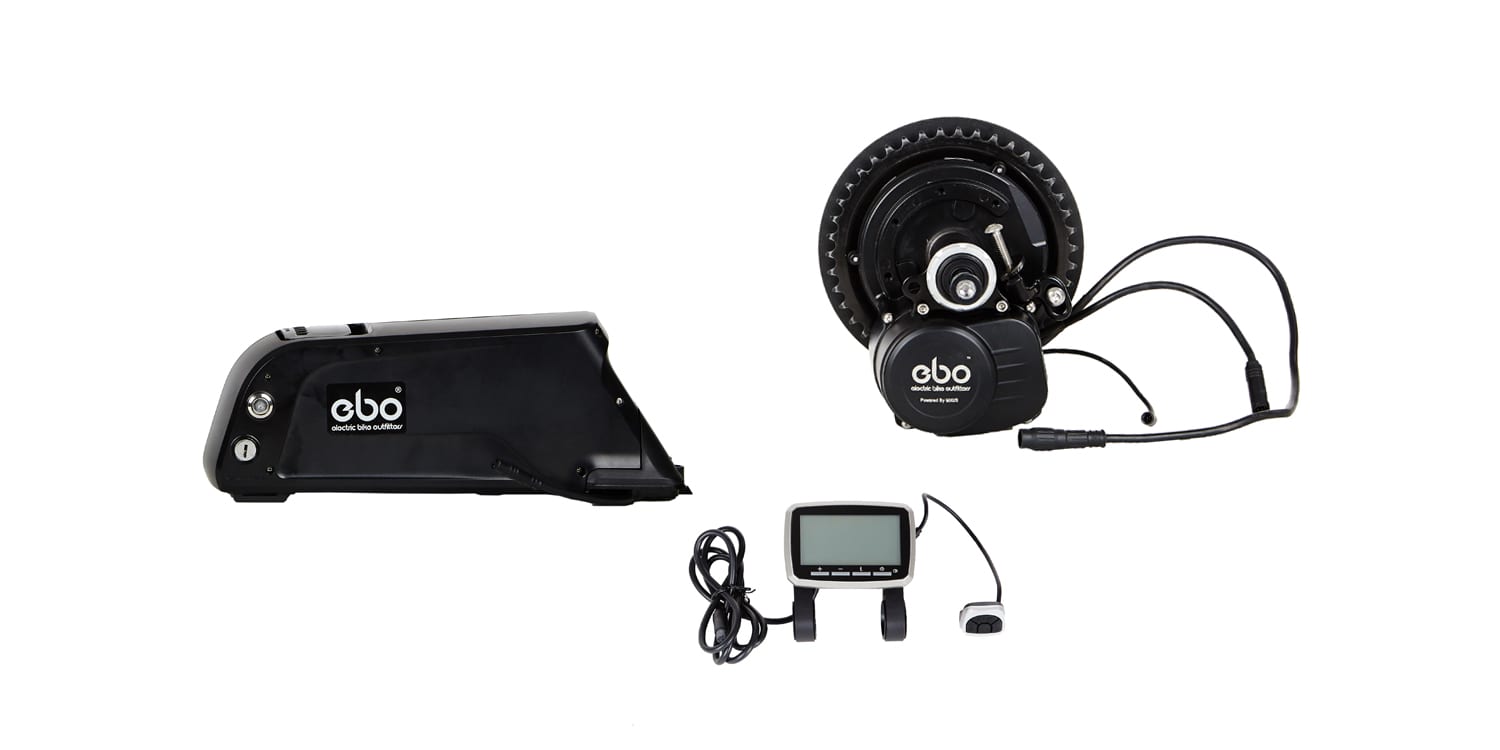
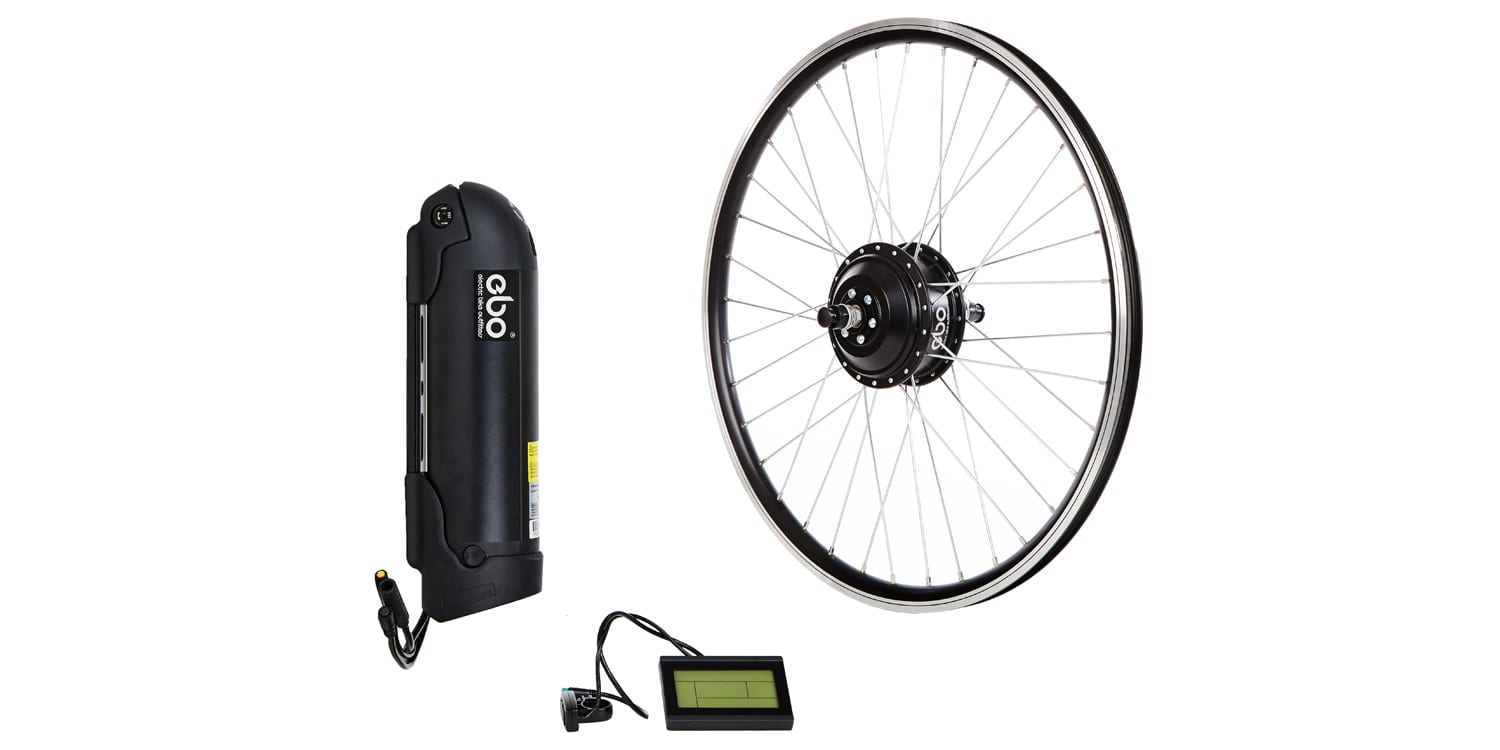
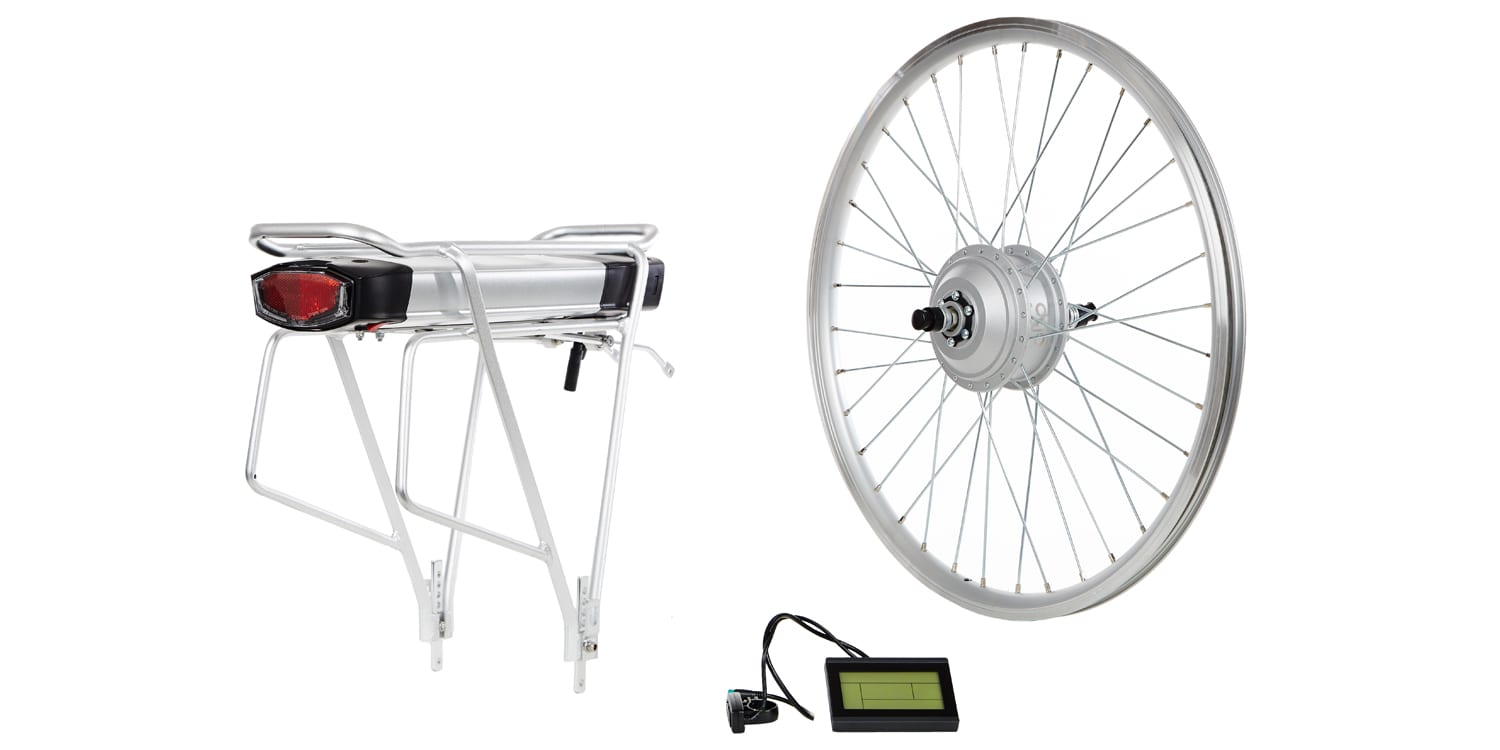
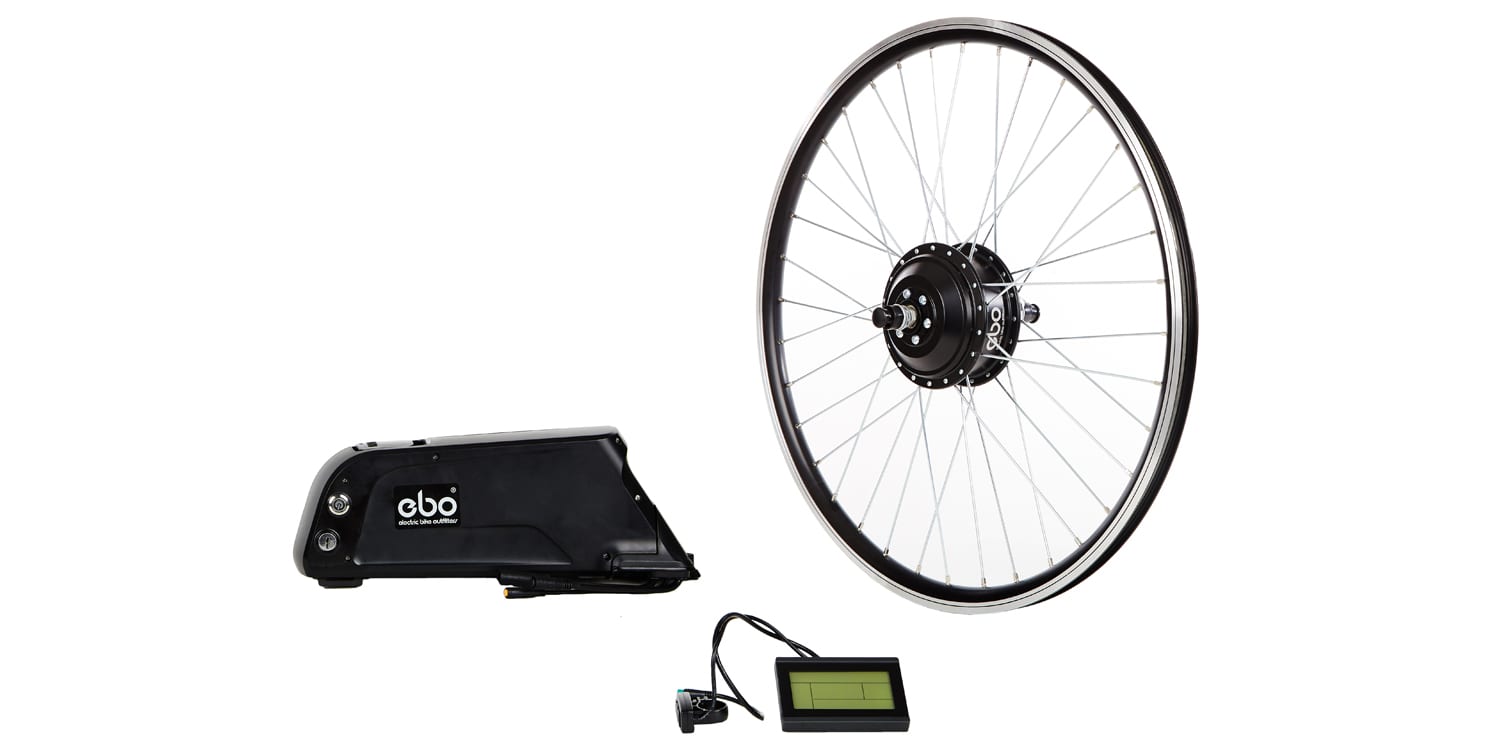
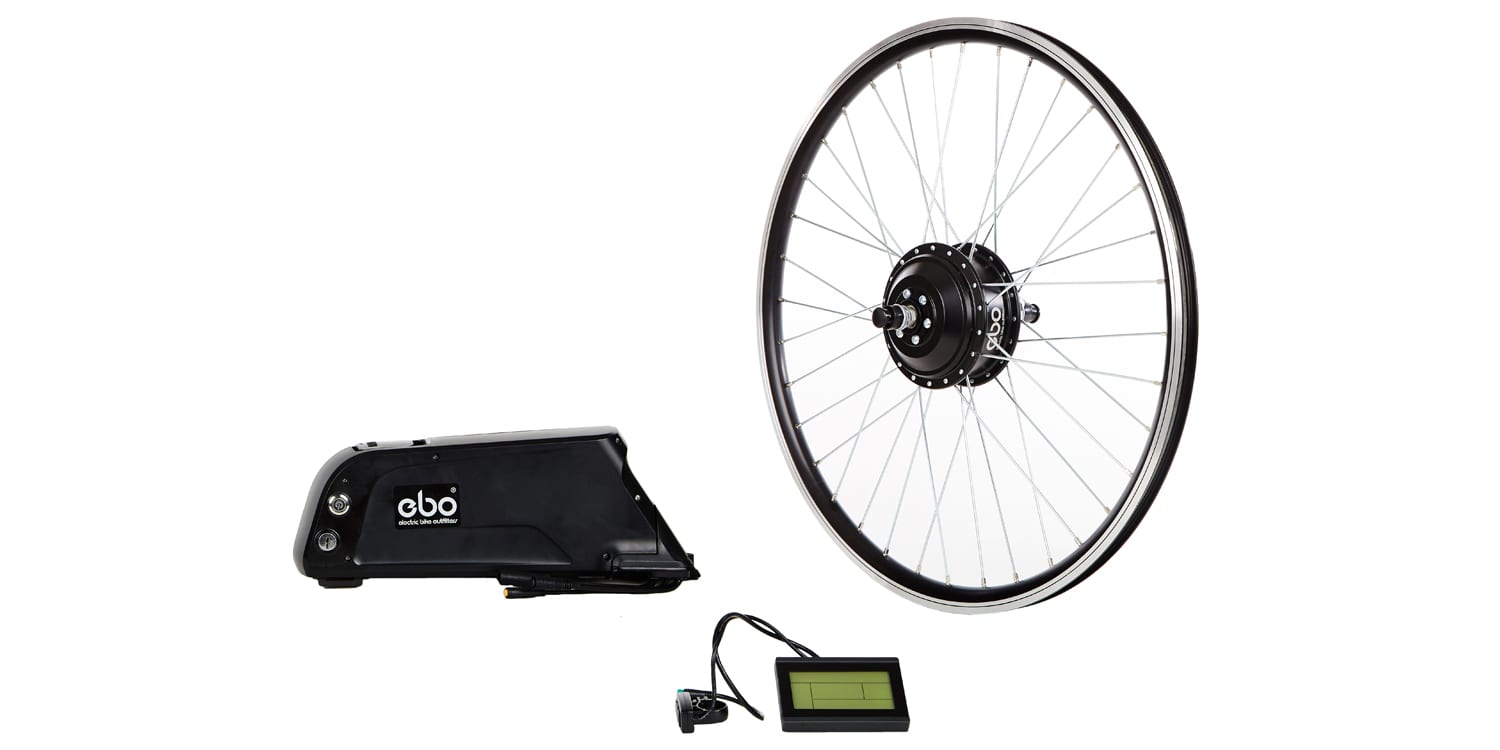
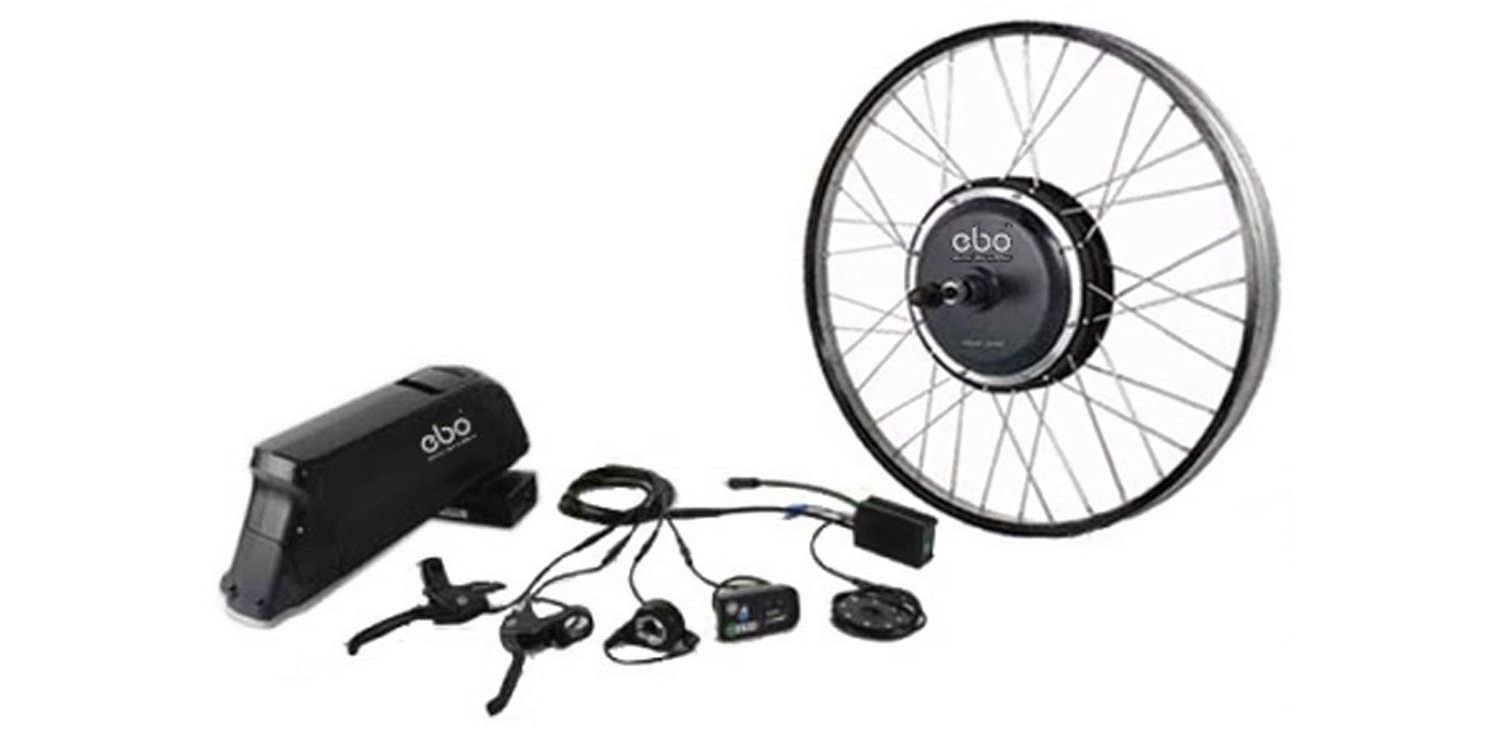
Reader Interactions